This website uses cookies so that we can provide you with the best user experience possible. Cookie information is stored in your browser and performs functions such as recognising you when you return to our website and helping our team to understand which sections of the website you find most interesting and useful.
How gin brands are tapping into emerging markets
By Nicola CarruthersThe world’s gin brands are looking to expand into new territories. But with thousands of local producers already a fixture in markets around the globe, how will foreign brands push their way in?
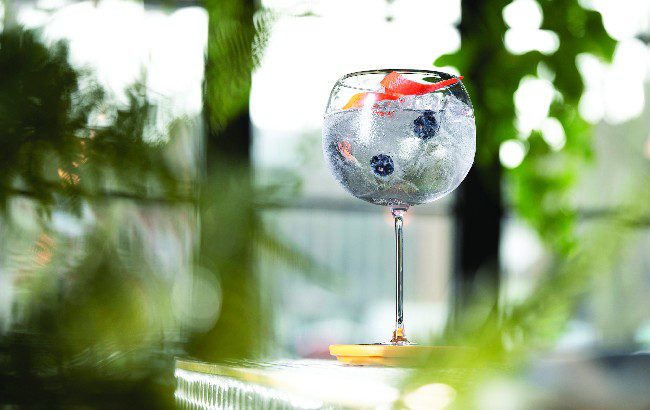
*This feature was first published in the July issue of The Spirits Business magazine.
The gin category has flourished as brands have tapped into flavour trends and cocktail occasions, with consumers ditching vodka to try more innovative expressions from craft distillers experimenting with unusual botanicals.
From a geographical perspective, gin appears to be going strong in major markets around the world, including established areas such as the UK, the US and Spain, while countries such as Singapore, Australia and India are showing potential with plenty of curious juniper spirits fans.
Globally, total gin volume grew by 12.3% in 2021, and is forecast to rise by a compound annual growth rate (CAGR) of 4.4% between 2021 and 2026, data from IWSR Drinks Market Analysis suggests.
Largest market
According to IWSR analyst Jose Luis Hermoso, the Philippines is the largest gin market in the world (nearly three times the size of number two-ranked US). The UK is the most valuable, followed by the US, and then the Philippines.
However, the momentum for gin seems to have slowed in the UK. The Wine and Spirit Trade Association (WSTA) highlights that gin sales in the UK dropped by almost £1bn (US£1.2bn) in value from £2.7bn in 2019 to £1.9bn in 2020, after the hospitality sector was affected by lockdowns.
Gin sales in 2021 in the UK reached £2.1 bn in value, below its pre-pandemic levels. IWSR data shows that gin volume in the UK fell by 7.3% in 2021 and is predicted to drop by 3.8% CAGR from 2021 to 2026. Gin’s other core market, Spain, on the other hand, saw a 38.3% rise last year, with a 1.7% CAGR increase expected over the next five years.
Last year, a number of markets recorded promising growth, including the Philippines (up by 8.8%), Nigeria (up by 6.7%), South Africa (up by 33%), and Brazil (up by 31.1%). The latter two markets are predicted to report notable increases by 2026, with South Africa expected to rise by 10.3% CAGR, and Brazil by 7.7%.
The US reported a minor 0.3% rise last year, with a CAGR rise of 0.8% expected in the next five years.
“Generally, Africa (including South Africa), where gin is a well-established category, is seeing strong growth,” Hermoso notes. “Brazil has also seen a major gin boom in the past few years, and this is expected to continue.” He says locally made premium gins are cropping up in non-traditional gin markets, such as Mexico or Brazil.
Centres of innovation
Hermoso expects the UK and Spain to remain important for the category. “It is in these markets where innovation (new flavours, pink gins, low/no alcoholic ‘gins’) is mainly taking place in the gin category before then spilling to the rest of the world,” he says. “Both the UK and Spain remain below pre-pandemic levels, it would seem the category has reached a peak in the markets where the gin boom started earlier, but others are still showing healthy growth.”
However, he notes: “Spain and the UK are challenging because of the sheer size of the category, and the very large number of brands on offer fighting for shelf space in bars and retailers: some consolidation is expected.”
For Zamora Company, its home market of Spain is the number-one market for Martin Miller’s, where it is one of the leading super-premium gin brands. The UK is the second most important market for the brand.
Arturo Illán, global brand manager for Martin Miller’s Gin, notes a contrasting picture in the two markets. “In Spain we are up by nearly 90% versus 2019 in the year to date, whereas in the UK our sales are quite stable,” he explains. “We see that the on-trade is responsible for a lot of the growth post-pandemic, and that the off-trade is flattening off after the end of the lockdowns.
“We have a very strong on-trade presence in markets across southern Europe, hence good growth there, but in markets that helped support losses during the pandemic due to our off-trade presence, it has now become more vital to focus on on-trade distribution and visibility.”
He highlights countries such as Portugal and Italy as being strong for the brand, while the company is aiming to develop Martin Miller’s in the US.
“The gin renaissance has gained popularity in the premium off-trade and the mixology community but is yet to gain overall acceptance in the mainstream on- and off-trade in the US,” Illán adds.
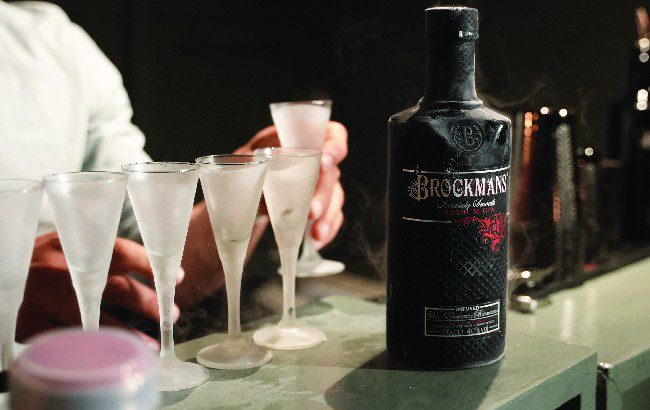
Super-premium gin brand Brockmans has also seen continued growth in European markets such as Germany and Spain, as well as the US. The brand saw its revenue rise by 36% in 2021, with Brockmans selling one million bottles for the first time in a 12-month period.
Brockmans CEO Guy Lawrence notes growth from markets such as Italy, Belgium, France and Austria, and cites “strong growth” in Spain, where the brand is growing at 30%.
Neil Mowat, brand director for Edinburgh Gin, says Spain is a challenging market due to it being price competitive. “It’s a high-volume market but it’s price driven, and we really struggle to deliver a product to market at the kind of competitive levels of pricing that you need to be at and to score any kind of success in Spain,” Mowat says.
“While we have a fantastic travel retail footprint, and that takes us into Spanish airports, and particularly where there’s a high volume of UK-based travellers, we don’t have a significant Spanish domestic market presence.”
Australian brand Four Pillars echoes a similar point. “One day we hope to be available in Spain but we’ve never actively pursued the market. If we found the right partner we might give it a shot,” explains co-founder Stuart Gregor, who cites the dominance of lower-priced gin brands in the market.
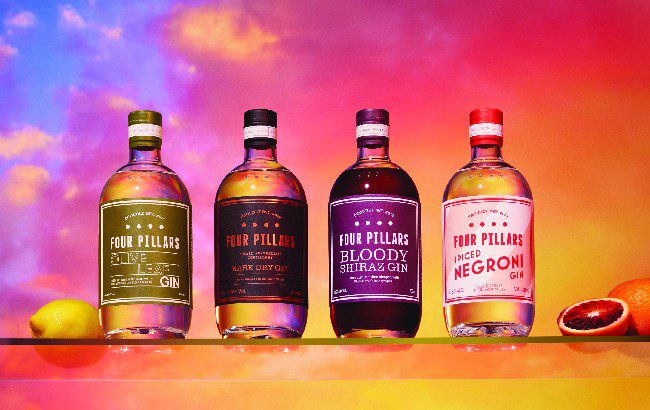
Australia is clearly a strong market for Four Pillars, which recently opened the doors to its revamped ‘Healesville 2.0’ distillery. “We need to continue to focus on Australia; even five years ago, we had quite a lot of that market to ourself, but now there are hundreds of distilleries making gin,” he adds. “A lot of smaller brands might find it harder to crack Australia in the next few years.”
The UK is the second most important market for Four Pillars. “The UK has always been at the front of gin,” says Gregor. “Australia might be 10 or five years behind. We will hit a saturation point in the distant future and start to see the strong brands thriving.”
Regarding trends in the category, Gregor says: “High-proof gins might come off the boil a bit. It will be harder for us to sell navy strength gins, for instance, as every country’s tax regime goes up, so it becomes expensive. People aren’t necessarily looking for stronger drinks.”
Australia is also a major opportunity for the UK’s Halewood Artisanal Spirits. Last December, the firm launched a AU$1 million (US$711,080) campaign for Whitley Neill Gin in the market to drive awareness during the summer months. The gin’s sales increased by 73% in Australia for the year to 24 September 2021, according to Simtac data cited by Halewood.
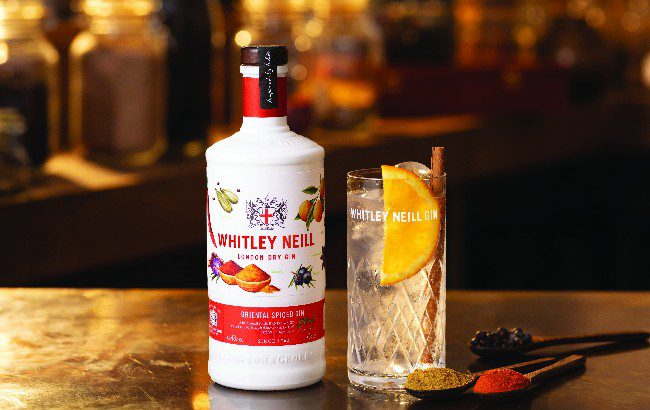
James Stocker, marketing director at Halewood, says the Australian market has several parallels with the UK, including being a major RTD market. “What we’ve done in the UK we can replicate in Australia,” explains Stocker, hence the investment.
Edinburgh Gin’s Mowat also notes a number of sponsorship partnerships in Australia, as well as bespoke social media campaigns. “As a global platform we use the Edinburgh Fringe, the world’s largest festival, recognised globally. We run a global PR and influencer programme in August, and start implementing global activity from mid-July.”
Like Stocker, Mowat notes similarities between the UK and the US. “Flavoured, full-strength gins have been part of the renaissance for the gin category for most markets.
“Australia really followed the dynamic that we’ve seen in the UK; there’s lots of new, young drinkers entering the category, and the stories behind it and accessibility of flavours. Flavours has been essential to the growth of the category in the same way that they have been in the UK.”
Being on the other side of the globe means Four Pillars has established a strong presence in Asian markets such as Singapore. Gregor also believes Indonesia will be strong for gin, particularly Australian gin, as well as tourist destination Bali. “Gin Spritzes will be a big thing in Bali in next 12 to 18 months,” he predicts.
Edinburgh Gin is also entering Taiwan and Japan, says Mowat.
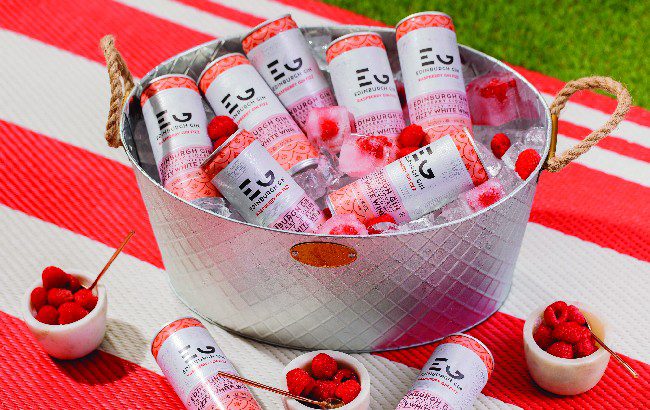
Stocker is also keen to grow Whitley Neill in Singapore, and the brand is also present in Chinese markets such as Beijing, Shenzhen and Shanghai, with the online channel and influencers being “very important” in China.
Illán also says there are challenges in China: “We had been making good progress there until the latest round of Covid infections and lockdowns hit – we will continue working with our partners there to get back to pre-pandemic levels. Asia is interesting for new ways of drinking gin and innovative cocktails and mixes of flavours.”
India has also been touted as a major opportunity for gin. Gregor is hopeful that spirits will be included in a free-trade agreement that is being discussed between Australia and India. “We hope in the next couple of years spirits will get in; it’s an opportunity to crack the Indian market,” he says. “We would love our gins to be available in India.”
Thibault Cuny, managing director and CEO of South Asia for Pernod Ricard, also highlighted the opportunity for gin in India, claiming it has a “bright future”. The company is working on “several innovations in gin”, Cuny told The Spirits Business this year.
Cuny also noted that Monkey 47 gin is “doing extremely well in India” – one of the few largest markets for the brand in the world.
South Africa is also a “big opportunity” for Whitley Neill, adds Stocker.
For Four Pillars’ Gregor, the market is a challenge because the brand can’t be price competitive. The market is “very much about promoting their local industry”, he explains.
Brockmans is also eyeing South Africa as a new market opportunity for the future. The Nordics is another area with a penchant for gin.
Zamora’s Illán says the region is a potential new market: “The Nordic markets are very interesting, and we see some impressive local brands making headway there.”
It’s also a “solid market” for Four Pillars, which notes the growth of Denmark as a gin-consuming territory. There’s good potential in South American markets such as Brazil, according to Lawrence, despite the economic challenges.
Meanwhile, the US has emerged as an important market for gin players. Stocker highlights areas such as Miami, New York, Boston, Chicago, Texas and California, where Halewood is focusing on building distribution and awareness of Whitley Neill. The US is also a core market for Brockmans.
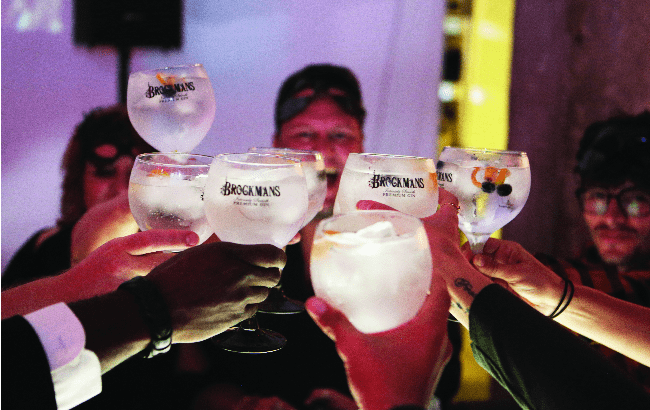
Four Pillars’ Australasian partner Lion (which owns a 50% stake in the distiller) “helped open doors in the States with good distribution partners”, says Gregor. Lion’s parent company is Japanese conglomerate Kirin, which owns the Four Roses Bourbon distillery in Kentucky. Four Pillars is available in 18 US states, with Gregor noting it has “90% of the high-priced gin drinking market covered” in the US.
The US’s vast market makes it “a challenge for any small brand, but we are working with the right teams and the right partners and ensuring that we do things right”, says Illán.
Halewood’s Stocker also cites the US and Canada as offering great opportunities for the market, following in the footsteps of the UK.
Cause for concern
The inflationary pressures being felt around the world is also a cause of concern for gin brands in higher price brackets. While the pandemic meant that off-trade sales boomed, with drinkers trading up to more premium offerings, higher costs of living could lead to consumers favouring lower-priced drinks in the short term.
This hasn’t gone unnoticed by Gregor. “We want to make sure we continue to grow in the UK; there’s a lot of price pressure there at the moment; supermarkets are pushing prices down; there’s inflationary pressure.
“Bigger retailers are delisting their products, reducing their gin selections. Supermarkets such as Waitrose and M&S have gone from 150 gins to 100. They are increasingly looking towards local gins. We need to become an essential gin, part of the core range.
When the economy stutters, then I think people would rather pay £15 for a bottle of gin. As salaries increase, some will start going back out to nice bars again, so we may pick up more in the on-trade. I think it will be a much more challenging environment.”
Illán adds: “The gin trend has been a challenging factor in any market where it has arrived, incredible levels of growth have created a call effect to local brands, generating a crowded category, making the competition very tough.”

